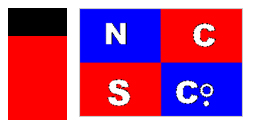North Coast Steam Navigation Company Limited
 Dating from 1891, the “North Coast Company” had its origins as the Grafton Steam Navigation Co. which was the product of New South Wales northern rivers’ shippers unifying in 1857.
Dating from 1891, the “North Coast Company” had its origins as the Grafton Steam Navigation Co. which was the product of New South Wales northern rivers’ shippers unifying in 1857.
The company entered the Second World War with seventeen ships, a new-build joining in 1942:
Ship |
Built |
Gross Tons |
In Service |
| Orara | 1907 | 1297 | 1907-1946 |
| Coolebar | 1911 | 479 | 1911-29, 1938-48 |
| Gunbar | 1912 | 482 | 1912-26, ?-1946 |
| Pulganbar | 1912 | 1160 | 1912-1948 |
| Doepel | 1919 | 389 | ?-1947 |
| Wollongbar | 1922 | 2239 | 1922-1943 |
| Ulmarra | 1923 | 924 | 1923-1955 |
| Uki | 1923 | 545 | 1923-1954 |
| Bonalbo | 1925 | 960 | 1925-1954 |
| Arakoon | 1926 | 875 | 1926-1962 |
| Nimbin | 1928 | 1052 | 1928-1940 |
| Melinga | 1928 | 536 | 1928-1954 |
| Wyrallah | 1934 | 1049 | 1934-1954 |
| Comara | 1937 | 751 | 1937-1954 |
| Nambucca | 1937 | 489 | 1937-1945 |
| Wyangerie | 1938 | 1068 | 1938-1954 |
| Bangalow | 1939 | 648 | 1939-1954 |
Uralba (gt 602) completed building in1942 and was immediately requisitioned by the Royal Australian Navy, with later peacetime service to 1947.
By the end of 1939 Orara, Uki and Coolebar had been requisitioned by the Royal Australian Navy as minesweepers, while on 10 January 1940 Nambucca joined them (serving as part of the 50th Minesweeping Group but later to be lost by fire in 1945 during requisition by the United States Army Small Ships Section). Orara, a flotilla leader, recovered survivors of the Cambridge, sunk by mine off South East Point at 11 a.m. on 7 November 1940. During November 1940 Uki recovered an enemy mine off Montague Island on the New South Wales south coast. Gunbar became a minesweeper late in 1940 and in September Wyrallah a commissioned fleet auxiliary, renamed in 1942 as HMAS “Wilcannia” then serving as a patrol vessel. Wyrallah had participated in the search for survivors of the HMAS “Sydney” sinking in November 1941. Nimbin became a mine casualty off Norah Head, New South Wales on 5 December 1940, with seven lives lost including the Master, its thirteen survivors recovered by Orara, with Bonalbo standing by.
United States Army Small Ships Section took over Bangalow (for survey/lighthouse/cable repair duties) and Melinga early in 1942, and Comara later that year, as supply vessels, with Nambucca joining them in this role on release from minesweeping. Wollongbar became the company’s second loss to enemy action, torpedoed off Crescent Head, New South Wales in April 1943, with thirty-two crew lost, five survivors.
Wyangerie entered Sydney Harbour on one voyage at 8.53 p.m. 31 May 1942, less than one hour after the three Japanese midget submarines I.22, I.24 and I.27. Pulganbar served as a stores ship from 1939 to 1946.